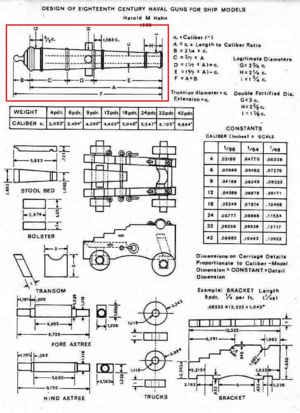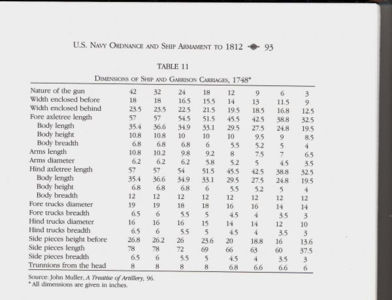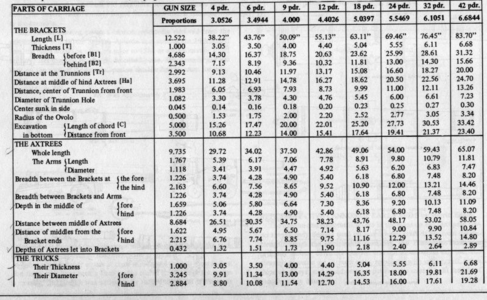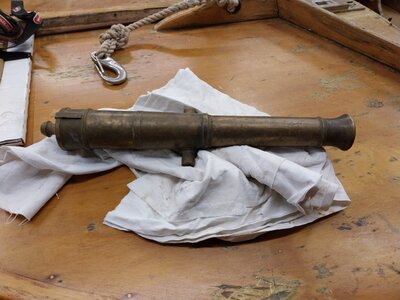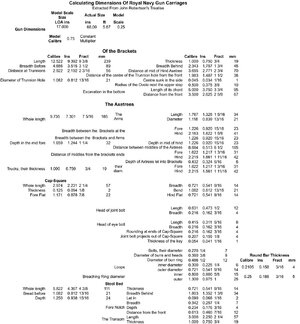Hello,
I'm new to this august group, and I go by the name of John.
Some considerable years ago we salvaged a bronze prop shaft from a beached wreck. After some discussion, we decided to machine four bronze 18th c. cannon from the material. One of our group, long gone now, was an ex army, retired gunsmith and black powder expert, along with other things that go bang. He span up four, working, 6 pdr cannon from this material, to the scale of 3/4 calibre. His own cannon was mounted as a field artilliary piece. I now have the other three guns, which I propose to mount on Royal Navy carriages and displayed on interlocking, individual, sections of a gundeck.
Now to the nub of the matter. I have scaled the all aspects of the gun carriages to calibre, according to, "John Robertson's Treatise", except for the quoins. I wonder if anybody has, or knows where to find, in relation to calibre, the dimensions of the quoin? In particular the angle of the wedge. Robertson does not mention any dimensioning of the quoin, apart from a carronade, and even then, they seem to be a rectangular block, rather than a wedge.
If anybody has any ideas on this score, I would be eager to hear of them.
I'm new to this august group, and I go by the name of John.
Some considerable years ago we salvaged a bronze prop shaft from a beached wreck. After some discussion, we decided to machine four bronze 18th c. cannon from the material. One of our group, long gone now, was an ex army, retired gunsmith and black powder expert, along with other things that go bang. He span up four, working, 6 pdr cannon from this material, to the scale of 3/4 calibre. His own cannon was mounted as a field artilliary piece. I now have the other three guns, which I propose to mount on Royal Navy carriages and displayed on interlocking, individual, sections of a gundeck.
Now to the nub of the matter. I have scaled the all aspects of the gun carriages to calibre, according to, "John Robertson's Treatise", except for the quoins. I wonder if anybody has, or knows where to find, in relation to calibre, the dimensions of the quoin? In particular the angle of the wedge. Robertson does not mention any dimensioning of the quoin, apart from a carronade, and even then, they seem to be a rectangular block, rather than a wedge.
If anybody has any ideas on this score, I would be eager to hear of them.



